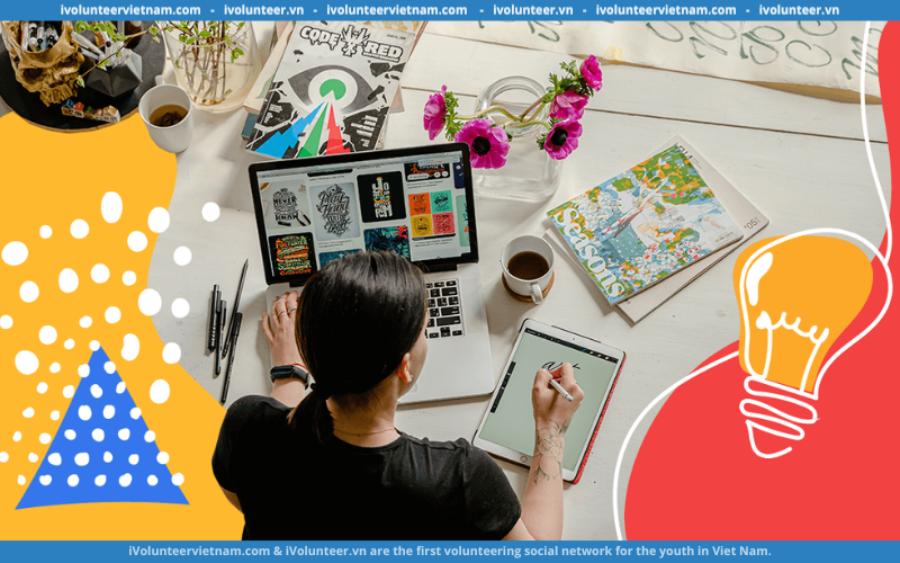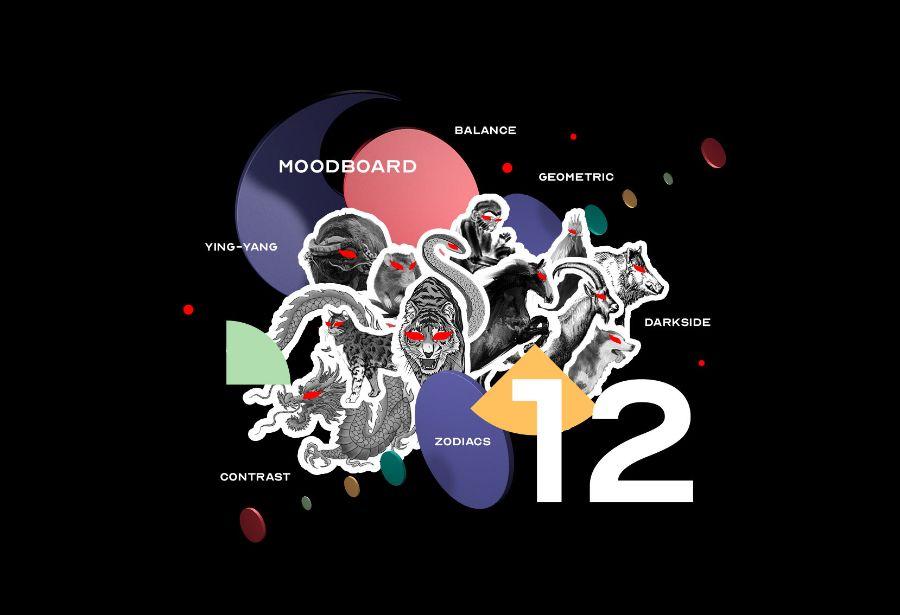Best Selling Products
Combining Scientific and Artistic Thinking: The Secret to Successful Design
Nội dung
- 1. Introduction to scientific thinking and artistic thinking in design
- 1.1 Scientific thinking in design
- 1.2 Artistic thinking
- 2. Why is it necessary to combine scientific and artistic thinking in design?
- 2.1 Enhance usability and aesthetics
- 2.2 Optimizing the design process
- 2.3 Improve problem solving ability
- 3. How to combine scientific thinking and artistic thinking in design
- 3.1. User research and data analysis
- 3.2. Applying scientific principles to the art of design
- 3.3. Testing and optimization
- 3.4. Set clear goals
- 4. Benefits of combining scientific and artistic thinking in design
- 5. Combining scientific thinking and artistic thinking
- 5.1. Combination principles
- 5.2. Combination steps
- 6. Illustrative example
- 7. Conclusion
Discover how to combine science and art in design. Learn the best methods for creating design products that are both beautiful and effective.

In the design industry, the combination of scientific thinking and artistic thinking is not only a trend but also a decisive factor in the success of design products. Talented designers know how to use logic, rigorous calculations from science and combine it with creativity and sophistication from art, creating works that are not only beautiful but also highly applicable. In this article, sadesign will explore methods of combining these two ways of thinking to achieve perfect designs.
1. Introduction to scientific thinking and artistic thinking in design
Throughout the development of the design industry, there have been many changes and improvements from theory to practice. One of the important factors that help design become perfect is the combination of scientific thinking and artistic thinking. Although each type of thinking has different characteristics and approaches, when combining them smoothly, designers can create products that are both highly aesthetic and meet functional requirements and efficiency.

1.1 Scientific thinking in design
Scientific thinking in design is a logical, analytical and data-driven approach to solving problems and creating effective solutions. It requires a deep understanding of principles and laws and the ability to apply them systematically in the design process. This thinking focuses on research, testing and optimization, ensuring that decisions are based on scientific evidence and practical evidence. This not only helps improve product quality but also optimizes resources, time and costs. In the modern context, scientific thinking is an important factor, combined with creative thinking, to create breakthrough and sustainable designs.
This is the application of scientific principles, logic, and research methods to arrive at the optimal solution to a design problem. Factors such as market research, user surveys, data analysis, and the principles of physics, biology, and psychology in product design all fall under this category.
The role of scientific thinking
Logical and systematic: Scientific thinking helps design become logical, systematic and follow certain principles. It helps designers analyze problems clearly, determine design goals, collect and process information, and then come up with optimal solutions.
Practicality and applicability: Scientific thinking focuses on the practicality and applicability of design. It helps designers create products that are not only beautiful but also meet the needs of users, bringing practical value.
Accuracy and objectivity: Scientific thinking is based on data, facts and research results. It helps designers make decisions based on science, avoiding emotional and subjective factors.
Methods of applying scientific thinking
Research and analysis: Designers need to conduct research on the market, target audience, design trends, new technologies, etc. to obtain complete and accurate information. Then, they need to analyze the information to determine the problem and design goals.
Establish a design process: Designers need to develop a clear design process, including specific steps such as problem identification, information gathering, idea sketching, detailed design, testing and evaluation.
Using tools and software: Designers can use design support tools and software such as CAD software, graphic design software, simulation software... to increase productivity and accuracy.
1.2 Artistic thinking
In design, this is unlimited creativity, full of aesthetics. It is a combination of images, colors, layouts and forms to convey emotions, create impressions and contribute to enriching the user experience. Artistic thinking promotes creative freedom and the ability to perceive beauty in all aspects of life.
This is the factor that helps designers create products that not only meet the function but also touch the emotions of the user. Artistic thinking requires sensitivity to color, shape, layout and the ability to combine these elements to convey messages in a subtle way. At the same time, it also encourages innovation and creativity beyond conventional patterns, thereby creating a unique mark and artistic value for each design.
The role of artistic thinking
Creativity and originality : Artistic thinking helps design become creative, unique and different. It encourages designers to explore and discover new ideas, beyond the usual frameworks and limits.
Aesthetics and Emotion : Artistic thinking focuses on the aesthetics and emotions of design. It helps designers create products that are not only beautiful to the eye but also touch the hearts of users, evoking positive emotions.
Expressive and individual : Artistic thinking allows designers to express their own personality, style and message through design. It helps create products that are deeply personal and have high artistic value.
Methods of applying artistic thinking
Finding inspiration : Designers can seek inspiration from many different sources such as nature, art, culture, history, everyday life...
Practice and Experiment : Designers need to constantly practice and experiment with new ideas, constantly exploring and developing their creativity.
Learning and networking : Designers should learn from colleagues and experienced people, participate in exhibitions, seminars, and network with the design community to expand their knowledge.
2. Why is it necessary to combine scientific and artistic thinking in design?
Combining scientific and artistic thinking is not only a trend but also a necessary requirement in developing design products. Both types of thinking play an important role in achieving a perfect design.

2.1 Enhance usability and aesthetics
This combination helps create design products that are not only beautiful but also easy to use. Scientific thinking helps determine basic functional requirements, while artistic thinking creates liveliness and appeal. When both elements are combined, the product is not only beautiful but also provides a better user experience.
This is an important factor in creating products that both meet high usability and ensure aesthetic value. Scientific thinking helps analyze, research and optimize technical and functional factors, ensuring that the product operates effectively and is suitable for actual usage needs. Meanwhile, artistic thinking brings creativity, uniqueness and emotion, helping the product attract users and create a deep impression. The harmonious combination of these two factors not only enhances the user experience but also contributes to building brand value and differentiation in the market.
2.2 Optimizing the design process
Combining scientific and artistic thinking in design is an important factor in creating products that both meet high usability and ensure aesthetic value. Scientific thinking helps guide the design process in a systematic and methodical way. Applying science to design helps you easily analyze and evaluate factors related to usability, suitability and efficiency.
On the contrary, artistic thinking helps this process not to be rigid, bringing flexibility and creativity, thereby optimizing the workflow. The harmonious combination of these two factors not only enhances the user experience but also contributes to building brand value and differentiation in the market.
2.3 Improve problem solving ability
When faced with a complex design problem, combining scientific and artistic thinking helps you approach the problem from different angles. Scientific thinking helps analyze the factors that affect the product, while artistic thinking helps you find creative and unique solutions that will attract users and make a lasting impression.
3. How to combine scientific thinking and artistic thinking in design
To effectively combine scientific and artistic thinking in design, designers need to pay attention to the following basic factors:

3.1. User research and data analysis
Before you start designing, user research and data collection are essential steps. A scientific mindset will help you analyze information from market research, user habits, and current trends to make reasonable design decisions.
In addition, collecting data also helps you better understand the needs and desires of users, thereby applying it to the design so that the product is not only beautiful but also easy to use and suitable for real habits.
3.2. Applying scientific principles to the art of design
Scientific principles such as color theory, the golden ratio, symmetry, and geometric structures can help you create harmonious and impressive artistic designs. By applying these rules, you will create a design that is aesthetically pleasing while still ensuring precision and perfection in every detail.
3.3. Testing and optimization
Scientific thinking encourages testing different design options to determine the optimal solution. You can experiment with different shapes, colors, sizes, and layouts to find the best solution for both aesthetics and functionality of the product.
Meanwhile, artistic thinking will help you see creativity and feel the balance between beauty and efficiency. Let creativity guide you and keep experimenting with new ideas.
3.4. Set clear goals
One way to combine scientific and artistic thinking is to clearly define your design goals. This goal will help you clearly distinguish between the artistic and scientific elements. You will have to set goals for product function and features (science), and at the same time, find ways to convey emotions and values through design (art).
4. Benefits of combining scientific and artistic thinking in design
Combining scientific and artistic thinking not only helps you enhance your creativity but also helps you optimize the design process and bring about perfect design products.

Improve innovation
Applying these two mindsets helps designers create unique and highly innovative products that meet the growing needs of consumers.
Increase competitiveness
Combining science and art helps create highly practical yet aesthetically pleasing designs, thereby increasing competitiveness in the market.
Ensure sustainability
Scientific designs will help products use resources efficiently and minimize waste, while artistic thinking creates lasting beauty and easily conveys messages.
5. Combining scientific thinking and artistic thinking
5.1. Combination principles
Find common ground : Scientific thinking and artistic thinking are not two opposing categories but have certain common points. Both aim to solve problems, search for new things, and beauty. Designers need to find these common points to combine them harmoniously.
Complementary : Scientific thinking and artistic thinking complement each other. Scientific thinking helps design become logical and rigorous, while artistic thinking brings creativity and originality. Designers need to combine them flexibly to create products that balance between practicality and aesthetics.
Flexibility and Creativity : Combining scientific and artistic thinking requires flexibility and creativity. Designers need to know when to use scientific thinking, when to use artistic thinking, and when to combine both.
5.2. Combination steps
Determine design goals: Designers need to clearly define what the design goals are, what requirements the product needs to meet, who the target audience is...
Research and analysis: Designers need to conduct research on the market, target audience, design trends, new technology... to get complete and accurate information.
Sketching ideas : Designers can sketch ideas by hand, with software... to visualize the product.
Detailed design : Designers need to concretize ideas by designing product details, choosing materials, colors, styles...
Testing and Evaluation : Designers need to test products to ensure functionality and aesthetics.
Adjust and refine : The designer needs to adjust and refine the product based on the results of testing and evaluation.
6. Illustrative example
Interior design : In interior design, scientific thinking helps designers arrange space reasonably, optimize functionality, choose suitable materials... Artistic thinking helps designers create beautiful living spaces, harmonious in color, light, layout...
Graphic design : In graphic design, scientific thinking helps designers convey messages clearly and effectively, choose reasonable layouts, use appropriate colors... Artistic thinking helps designers create unique, impressive images and symbols that attract viewers.
Product design : In product design, scientific thinking helps designers create quality, durable products that meet user needs... Artistic thinking helps designers create beautiful, unique products with high aesthetics.
7. Conclusion
Combining science and art in design is not a simple thing, but if done correctly, it will bring outstanding results. You will have products that are not only beautiful but also easy to use and highly applicable in practice. Always remember that design is not only about beauty, but also the harmony between function and aesthetics. When you can master both of these elements, you will create truly outstanding and impressive design products.












































